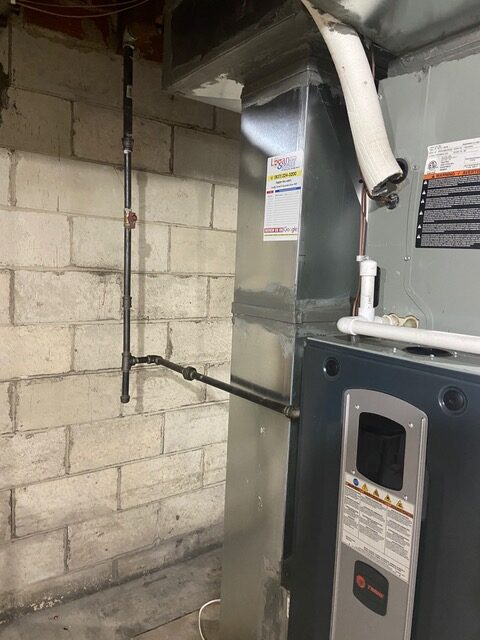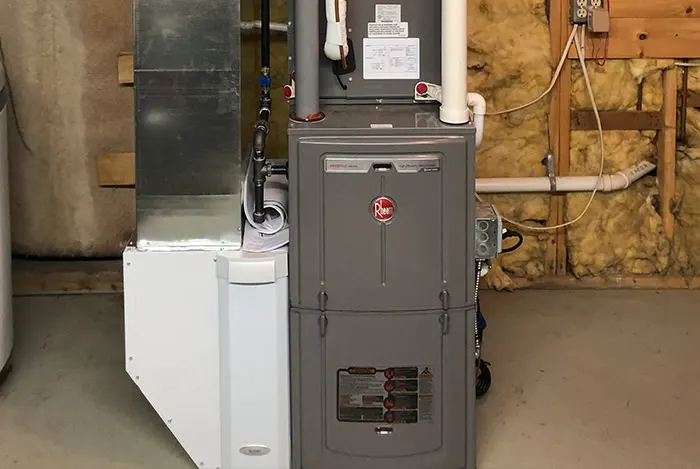The Ultimate Overview to Heater Installation for a Cozy Home
Furnace installation is a vital element of keeping a comfy home setting, specifically throughout the colder months. Understanding the various types of furnaces offered and the importance of choosing the proper size can considerably affect both effectiveness and comfort levels. Furthermore, a complete installment procedure, matched by the right tools and materials, ensures optimum efficiency. This overview aims to equip homeowners with the expertise required to make educated decisions and apply reliable maintenance practices. As you take into consideration these variables, the concern stays: what steps can you require to guarantee your furnace offers you well for several years ahead?
Types of Heaters

Gas heaters are one of the most common choice due to their effectiveness and reduced functional prices. They make use of gas or propane, providing quick heating and constant performance, making them suitable for cooler environments.
Electric heaters, while generally easier to install and maintain, tend to have higher operational costs. They are frequently favored in areas where gas service is unavailable or for homes with existing electric infrastructure.
Oil furnaces, though much less usual today, continue to be a sensible alternative in particular areas. They shed heating oil, which can be beneficial during colder months, but their dependence on oil distribution presents prospective difficulties.
Furthermore, there are high-efficiency models available throughout these kinds, which can substantially reduce energy intake and energy expenses - furnace installation. Ultimately, understanding these heater kinds will help home owners pick a system that lines up with their heating requires, budget plan, and energy choices
Selecting the Right Size
Picking the proper size for a heater is important to making sure optimal efficiency and energy efficiency. A small furnace will certainly have a hard time to maintain comfy temperatures throughout the cold months, leading to boosted wear and tear, greater energy costs, and potential system failing. On the other hand, an extra-large heating system might cycle on and off as well regularly, causing ineffective home heating and irregular temperature distribution within the home.
To establish the proper heater dimension, a computation called the Guidebook J tons estimation ought to be executed. This process reviews various aspects, consisting of the square video footage of the home, insulation degrees, home window sizes, and regional environment conditions. This detailed evaluation guarantees that the furnace fulfills the particular home heating needs of the space.

Setup Process Review
Gathering the necessary devices and materials is vital for a successful heater installation. Correct preparation guarantees that the installment procedure is efficient and reduces the possibility for mistakes.
Trick tools required include a drill, screwdrivers, wrenches, pliers, and a degree. A multimeter is crucial for electrical connections, while a pipe cutter and adjustable wrench are needed for gas line installment. In addition, a measuring tape and a stud finder will help in making certain exact positioning and secure fastening of the furnace.
In regards to products, you will require ductwork, insulation, and sealing tape to ensure optimum air movement and power efficiency - furnace installation. It is additionally crucial to have a new heater filter handy, along with airing vent materials, such as PVC pipeline or metal article flue, relying on the kind of furnace being mounted
Security tools, including handwear covers, goggles, and a face mask, is additionally vital to protect versus dust and debris throughout setup. Having all these devices and materials easily available not only simplifies the process yet also improves the safety and efficiency of the heater setup.
Upkeep Tips for Longevity
To make sure the long life of your heating system, it is necessary to execute a routine upkeep schedule that attends to key elements of the system. Beginning by replacing or cleaning the air filter each to 3 months, as a clogged filter can restrict air flow and lower efficiency. Additionally, check and cleanse the blower assembly to avoid dirt buildup that can prevent performance.
Next, inspect the thermostat setups and rectify if essential to ensure accurate temperature guideline. Evaluate the ductwork for leakages or clogs, as this can lead to energy loss and uneven heating. Consistently lubricate the electric motor and bearings according to the manufacturer's recommendations to reduce deterioration.
Expert assessments need to take place each year, where a certified professional can assess the furnace's overall problem, look for gas leakages, and make sure that security functions are working properly. Lastly, consider installing a programmable thermostat to optimize power use and preserve constant home temperatures. By taking on these upkeep methods, you can enhance your heater's performance, prolong its life-span, and ultimately take pleasure in a comfortable and comfortable home setting.
Verdict

Comments on “HVAC Portland: Trustworthy heating, ventilation, and air conditioning services”